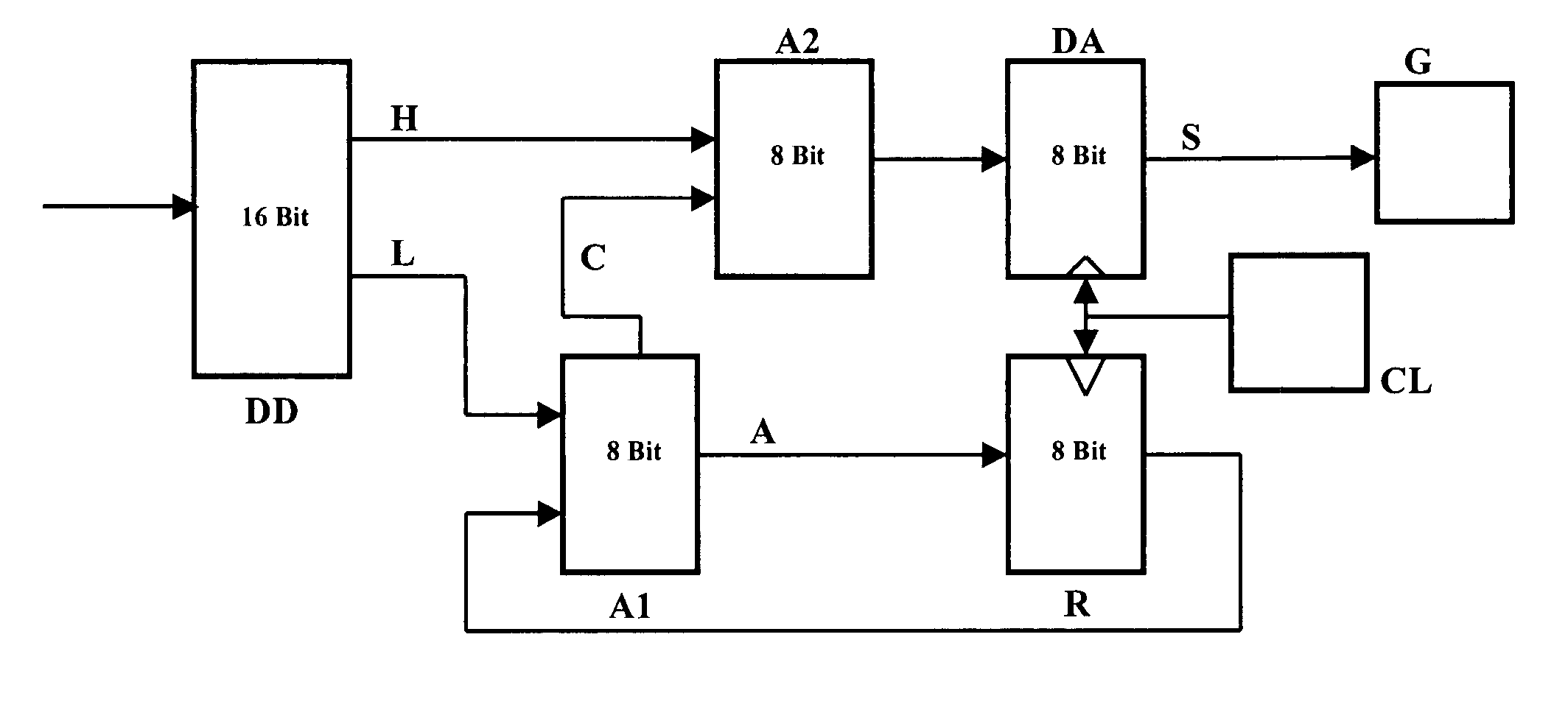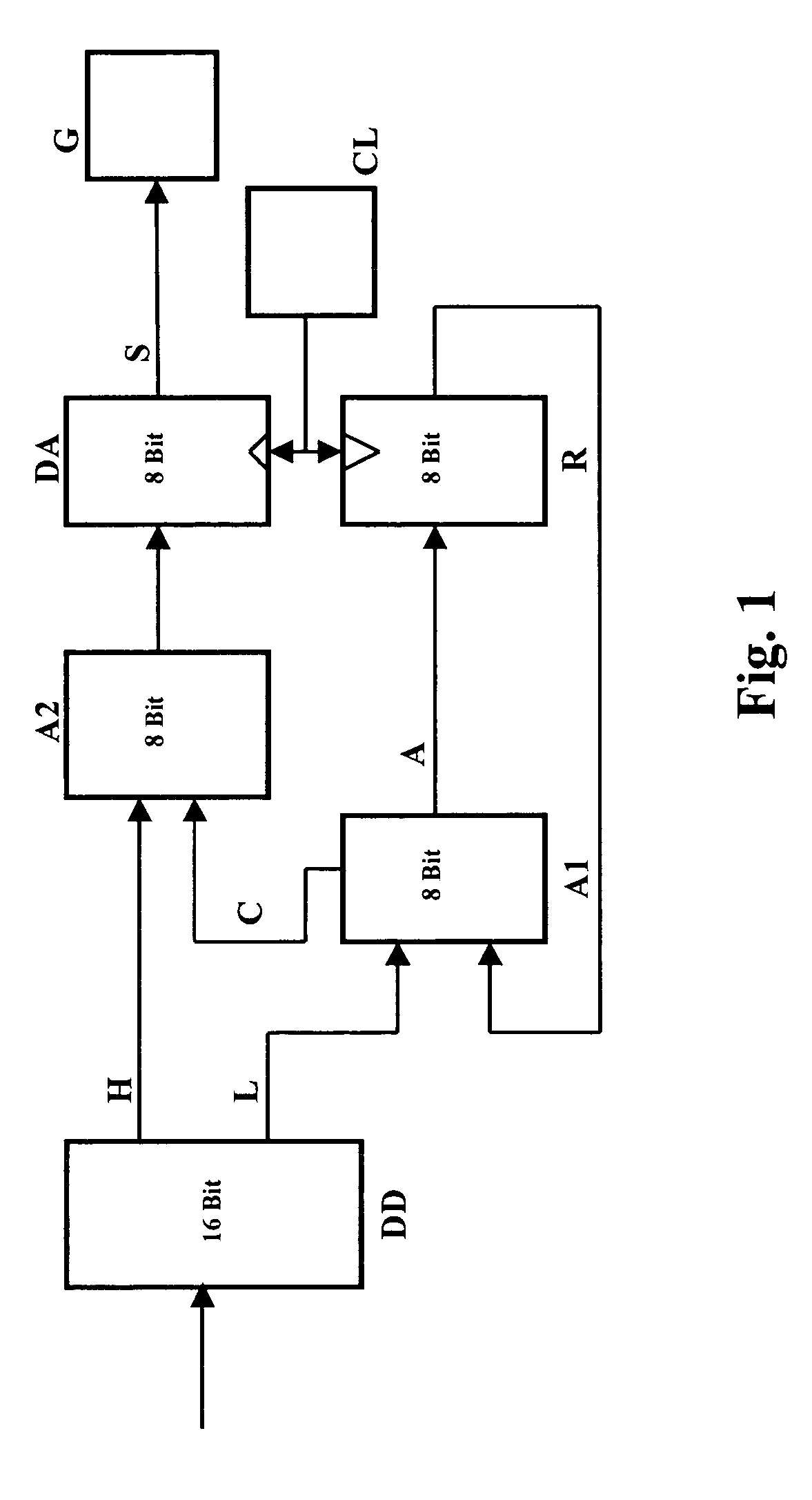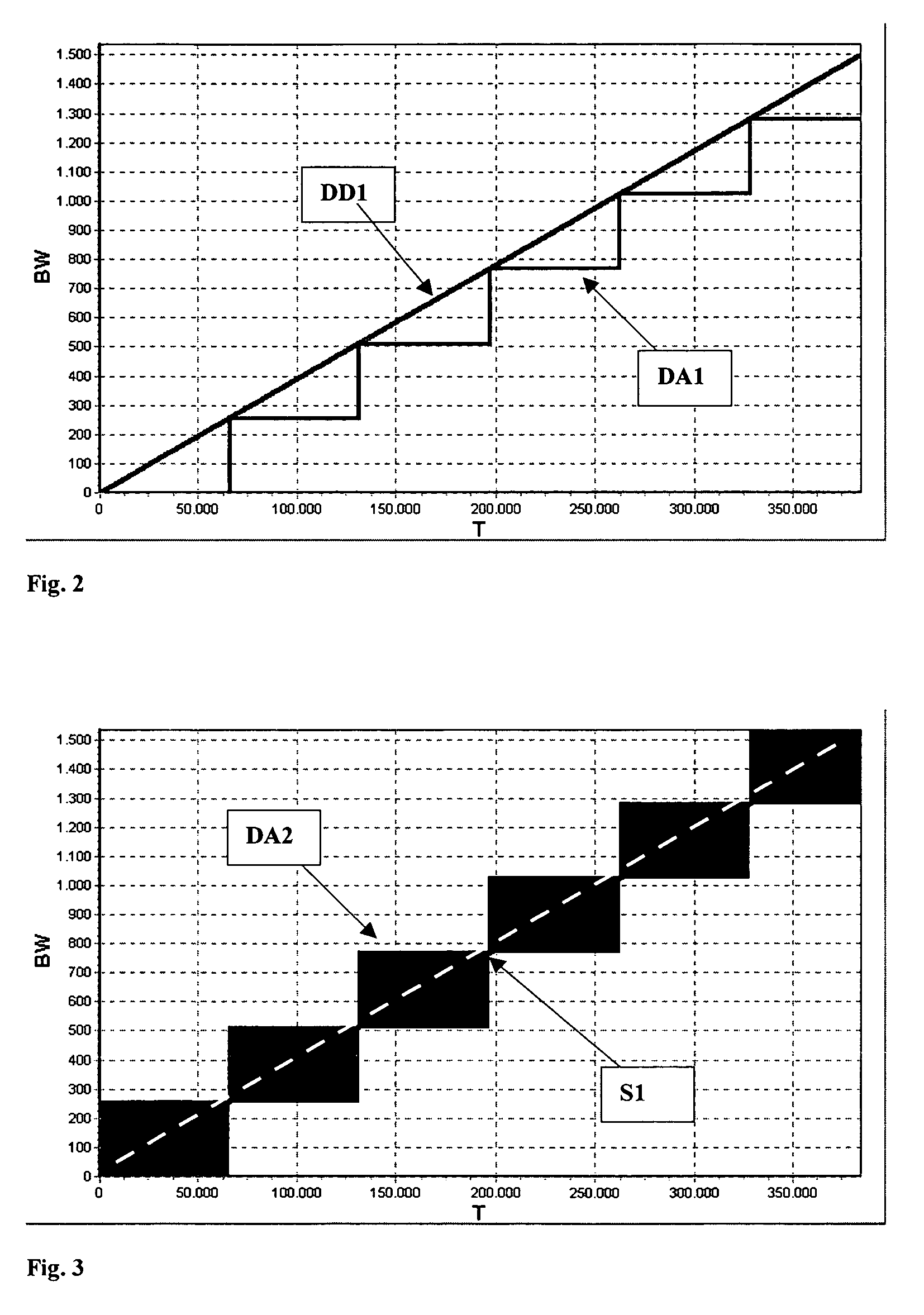Recording or reproduction apparatus for optical recording media having means for increasing the resolution of a digital-to-analog converter in the servo regulating circuit
a technology of digital-to-analog converter and servo regulating circuit, which is applied in the field of recording or reproduction apparatus for optical recording media, can solve the problems that the resolution of the digital-to-analog converter cannot be achieved, and achieve the effect of increasing the resolution of the digital-to-analog converter, eliminating quantization noise, and increasing the resolution
- Summary
- Abstract
- Description
- Claims
- Application Information
AI Technical Summary
Benefits of technology
Problems solved by technology
Method used
Image
Examples
Embodiment Construction
[0013]The invention is explained in more detail with reference to exemplary embodiments illustrated in drawings, in which:
[0014]FIG. 1 shows a block diagram of a first exemplary embodiment for increasing the resolution of a digital-to-analog converter in the servo regulating circuit,
[0015]FIG. 2 shows a diagram of the binary values of a linearly rising data signal in the case of differing resolution,
[0016]FIG. 3 shows a diagram of the binary values of a digital-to-analog converter having an increased resolution and as manipulated variable after low-pass filtering,
[0017]FIG. 4 shows a diagram of the binary values of the positive half-cycle of a sinusoidal signal with a digital-to-analog converter having a predetermined bit width,
[0018]FIG. 5 shows a diagram of the binary values of the positive half-cycle of a sinusoidal signal with a digital-to-analog converter having a predetermined bit width and with means for increasing the resolution,
[0019]FIG. 6 shows a diagram of the binary val...
PUM
| Property | Measurement | Unit |
|---|---|---|
| distance | aaaaa | aaaaa |
| distance | aaaaa | aaaaa |
| frequency | aaaaa | aaaaa |
Abstract
Description
Claims
Application Information
 Login to View More
Login to View More - R&D
- Intellectual Property
- Life Sciences
- Materials
- Tech Scout
- Unparalleled Data Quality
- Higher Quality Content
- 60% Fewer Hallucinations
Browse by: Latest US Patents, China's latest patents, Technical Efficacy Thesaurus, Application Domain, Technology Topic, Popular Technical Reports.
© 2025 PatSnap. All rights reserved.Legal|Privacy policy|Modern Slavery Act Transparency Statement|Sitemap|About US| Contact US: help@patsnap.com



